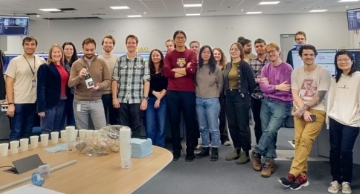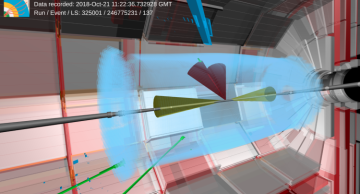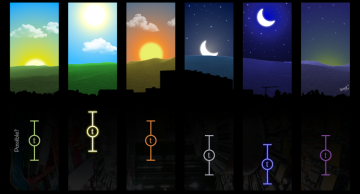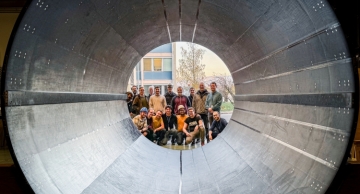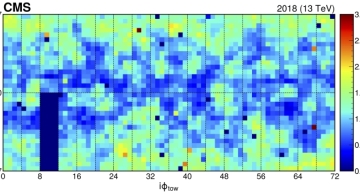Welcome to our look back at 2024 - and what a year it has been!
After last winter’s planned technical stop of the LHC, everything started back up again so that CMS could continue collecting data for the LHC’s Run 3. We published a piece about how we…
News
|
nstathak |
Detector
The heavy ion Run has just concluded, marking the start of the extended year-end technical stop (EYETS). Reflecting on 2024, this year’s LHC Run exceeded expectations, delivering the highest accumulated data volume to date. In alignment with this…
|
sohurst |
Collaboration
The CMS Collaboration announced the 2024 Young Researcher Prize winners during the opening plenary of December’s CMS Week: Silvio Donato, Kenneth Long, and Stella Orfanelli.
This annual award recognizes the exceptional contributions of young…
|
maiqbal |
Physics
In a recent result, the CMS experiment has combined a comprehensive set of searches for the production of not one but two Higgs bosons – the result is a significant step towards observation of this elusive process, and constitutes a legacy of…
|
maiqbal |
Physics
In a first measurement of its kind at the LHC, the CMS experiment tests whether top quarks adhere to Einstein’s special theory of relativity, and improves the bounds on noncompliance by up to a factor of one hundred with respect to previous…
|
sohurst |
Detector
Above: Part of the BTST team during the unboxing of the tube. (Image: Noor Abduljalil J Abdulla)
In a massive step toward CMS’ High-Luminosity era detector, a key component of the build has arrived at the CERN laboratories.
CMS has received a…
|
nstathak |
Engage with CMS
In November 2014, CMS made history by releasing its first batch of open data, comprising approximately 27 terabytes of proton-proton collision data collected in 2010 at a 7 TeV center-of-mass energy. This groundbreaking release marked the beginning…
|
sohurst |
Collaboration
Above: Prof. Sir Adrian Smith FRS, the President of the Royal Society, with Tejinder. Photograph by the Royal Society
Professor Sir Tejinder Singh Virdee FRS awarded the 2024 Royal Medal of the Royal Society
Tejinder ‘Jim’ Virdee, from Imperial…
|
sohurst |
Collaboration
This result is not a sprint, it is a marathon. How the teams behind the measurement of the W-boson mass at the CMS experiment found working on this result, almost a decade in the making.
Precision measurements like that of the mass of the W boson…
|
sohurst |
Detector
CMS develops and deploys a new machine-learning technique based on neural networks that is able to spot existing and developing anomalies in the functioning of the detector.
In the quest to uncover the fundamental particles and forces of nature, one…
|
nstathak |
Engage with CMS
On Friday, October 4th, 2024, the CMS Collaboration organised an in-person event at Point 5 for the residents of the Pays de Gex, France, where the CMS detector is located. For the first time after COVID-19, the local community was invited to visit…
|
nstathak |
Collaboration
The CMS Experiment welcomed more than 300 collaborators during the CMS Upgrade Week from September 16 to 20, 2024. The week showcased the immense amount of work underway to transform the CMS detector ready for the LHC High Luminosity era, also known…


